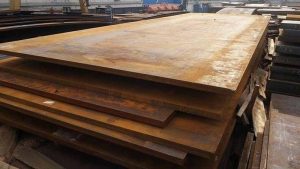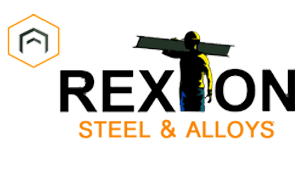When it comes to weather-resistant materials for outdoor applications, the Corten steel plate stands out for its unique ability to form a protective oxide layer, making it ideal for use in architectural facades, sculptures, bridges, railway structures, shipping containers, and landscaping features. Known for its rustic appearance and superior corrosion resistance, Corten steel is available in a variety of specifications tailored to structural demands. This blog explores not only what Corten steel plate is and where it’s used, but also compares the chemical and mechanical differences between Corten A & Corten B Steel Plates. You’ll learn how Corten A’s higher phosphorus content enhances durability in aggressive environments, while Corten B provides cost-effective performance in less corrosive conditions. We’ll also examine key considerations such as workability, high-temperature resistance, environmental impact, and cost, helping you choose the right grade of Corten steel for your specific project.
What is Corten Steel Plate?
Corten Steel Plates are produced from an alloy containing copper, chromium, nickel, and phosphorus, which assists in the creation of a protective oxide layer on the surface. The oxide layer stops further corrosion, thus making it a suitable material for different applications that are exposed to the outdoor environment, including bridges, buildings, and sculptures.
What distinguishes Corten steel from regular carbon steel is its ability to form this protective patina over time when exposed to the elements, which also gives it a distinctive, rustic appearance. Over time, the surface develops a stable layer of rust that prevents the steel from corroding further, even in harsh weather conditions.

What is Corten Steel Plate Used for?
Architectural Facades and Sculptures
Corten steel is often used in architecture to create striking facades and sculptures. Its ability to develop a natural patina over time adds to the aesthetic appeal, making it perfect for modern buildings, parks, and public art installations. The rusted appearance provides a unique and weathered look that blends well with natural surroundings.
Bridges and Railways
Corten steel is commonly used in the construction of bridges and railway components due to its excellent corrosion resistance. It withstands harsh outdoor conditions, including rain, snow, and extreme temperatures, without deteriorating quickly. This durability makes it a cost-effective material for long-term infrastructure projects.
Containers and Storage Units
Shipping containers and storage units made from Corten steel benefit from its resistance to rust and weathering, ensuring they remain sturdy and functional over time. These containers are often exposed to salty sea air and harsh conditions, and Corten steel’s protective oxide layer prevents rapid deterioration.
Landscaping
In landscaping, Corten steel is used for a variety of outdoor features, including retaining walls, planters, and garden sculptures. The material’s rusted finish gives it a natural, earthy look that enhances garden aesthetics. Additionally, its strength and resistance to the elements make it ideal for long-lasting outdoor installations.
Corten Steel Plate Specification
Corten steel plates are available in a range of thicknesses, typically from 2mm to 100mm or more, to accommodate various applications. The material boasts impressive mechanical properties, including high yield strength and durability, making it suitable for heavy-duty structural uses. Its chemical composition includes elements like copper, chromium, nickel, and phosphorus, which contribute to its exceptional corrosion resistance. Corten steel’s ability to form a protective oxide layer upon exposure to the elements enhances its resistance to atmospheric corrosion, particularly in harsh or changing weather conditions. This combination of strength and weathering resistance makes it ideal for outdoor structures, sculptures, and infrastructure.
Corten A Steel Plate vs Corten B Steel Plate
Chemical Composition
| Element | Corten A (%) | Corten B (%) |
| Carbon (C) | ≤ 0.12 | ≤ 0.16 |
| Manganese (Mn) | 0.20 – 0.50 | 0.20 – 0.65 |
| Phosphorus (P) | 0.07 – 0.15 | ≤ 0.035 |
| Sulfur (S) | ≤ 0.030 | ≤ 0.030 |
| Silicon (Si) | 0.25 – 0.75 | 0.15 – 0.50 |
| Copper (Cu) | 0.25 – 0.55 | 0.20 – 0.40 |
| Chromium (Cr) | 0.50 – 1.25 | 0.40 – 0.65 |
| Nickel (Ni) | ≤ 0.65 | ≤ 0.40 |
| Vanadium (V) | — | ≤ 0.02 |
| Aluminum (Al) | — | ≤ 0.02 |
- Corten A: Contains a higher level of phosphorus, which enhances its corrosion resistance, especially in aggressive environments such as coastal areas or industrial zones. The higher phosphorus content helps the steel form a protective oxide layer more efficiently.
- Corten B: Has a lower phosphorus content, making it less resistant to severe corrosion but still suitable for environments with moderate exposure to weathering. The steel’s composition allows it to perform well in less corrosive conditions.
Mechanical Properties
- Corten A: Offers superior strength and toughness compared to Corten B, making it ideal for heavy-duty structural applications where additional strength is required. Its mechanical properties make it more suitable for high-stress environments.
- Corten B: While durable and resistant to corrosion, Corten B is not as strong as Corten A in extreme conditions and may not perform as well in applications that require higher strength. It is ideal for less demanding structural applications.
Applications
- Corten A: Best suited for applications in harsh environments, such as coastal structures, bridges, and sculptures, where maximum corrosion resistance is necessary. Its excellent weather resistance also makes it ideal for architectural facades exposed to the elements.
- Corten B: More commonly used for general structural applications like railway tracks, shipping containers, and outdoor construction, where moderate weather exposure is expected. It is also used in decorative applications and architectural projects that don’t face extreme environmental conditions.
Cost
- Corten A: Due to its higher phosphorus content and enhanced corrosion resistance, Corten A is generally more expensive than Corten B. The extra cost is justified for projects requiring superior performance in harsh environments.
- Corten B: More affordable than Corten A, making it a cost-effective choice for projects where extreme corrosion resistance is not critical. It’s a popular choice for general construction and structural applications.
Durability in Aggressive Environments
- Corten A: Specifically designed for use in aggressive environments, such as those exposed to saltwater or industrial pollutants. Its higher resistance to atmospheric corrosion ensures a longer lifespan in such conditions.
- Corten B: While resistant to weathering, Corten B may not provide the same long-term durability in highly corrosive environments. It’s better suited for areas with moderate atmospheric conditions.
Workability
- Corten A: Due to its enhanced toughness and strength, Corten A can be harder to fabricate and weld compared to Corten B. This could lead to additional processing costs in projects that require complex shaping or welding.
- Corten B: Easier to work with compared to Corten A due to its lower strength and toughness. It is preferred in projects where fabrication and welding play a significant role in the construction process.
Resistance to High Temperatures
- Corten A: Performs better in high-temperature environments, thanks to its higher strength and better overall mechanical properties. This makes it suitable for applications where steel components may be exposed to elevated temperatures.
- Corten B: While still resistant to heat, Corten B may not perform as well under high-temperature conditions as Corten A. It is more suited for moderate temperature environments.
Environmental Impact
- Corten A: Its superior corrosion resistance allows it to maintain its structural integrity in more demanding environments, reducing the need for maintenance and replacement. This can contribute to a lower overall environmental impact over the life of a project.
- Corten B: Although highly resistant to weathering, it may require more maintenance or replacement in environments with severe corrosion, potentially leading to higher environmental costs in the long term.
Conclusion
Both Corten A and Corten B offer remarkable resistance to weathering and corrosion, making them ideal for use in outdoor and structural applications. The main difference between the two lies in their chemical composition and mechanical properties. If you require maximum corrosion resistance in aggressive environments, Corten A might be the better choice. However, for general structural applications where cost-effectiveness is a concern, Corten B provides a solid option. By understanding these differences, you can choose the right type of Corten steel plate for your project’s needs.

